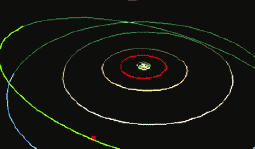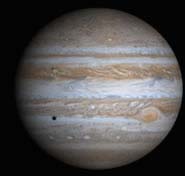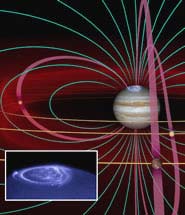Physics and Astronomy
This area deals with the fundamental laws and building blocks of nature and how they interact, the properties and the behavior of matter, and research into space and time and their structures.
innovations-report provides in-depth reports and articles on subjects such as astrophysics, laser technologies, nuclear, quantum, particle and solid-state physics, nanotechnologies, planetary research and findings (Mars, Venus) and developments related to the Hubble Telescope.

Warp drive a no go
Sci-fi experts know that many seemingly impossible technologies materialise years later, but unfortunately this may not to be the case for warp-drive – travelling through space faster than the speed of light. The favourite science fiction theory of space contracting in front of spacecraft, and expanding behind it to form warp-drive is under threat according to new work by a researcher in Portugal published today in the Institute of Physics journal, Classical and Quantum Gravity.
General re

One-way street planned for heat
Physicists design material that conducts one way and insulates the other.
European physicists have sketched out a blueprint for a valve that lets heat pass only one way. The proposed material conducts heat flowing in one direction, but also behaves as an insulator, stopping it going the other way 1 .
In theory, a heat valve could keep parts of microelectronic circuitry cool or channel heat to chip-sized chemical reactors, which are currently being developed fo

Ideas about Early Solar System Development May Need Revision
A new analysis of the mineral composition of meteorites suggests that theories concerning the development of the early solar system may need revision. Announcing their results today in the journal Science, researchers conclude that it took the earth only 20 million years to form from material floating around the early sun. Previous estimates, in contrast, had placed that figure at around 50 million years. The findings also re-open the debate over which types of supernovae could have produced our sola

Unique gathering of spacecraft yields new views, clues on Jupiter’s magnetosphere
A space probe carrying British-designed and operated instruments has helped scientists to understand the magnetosphere surrounding Jupiter better than ever before.
Its magnetosphere was observed to contract in response to shock waves generated at the Sun, the first time scientists have been able to clearly observe how changes in the solar wind affect the magnetosphere of this giant planet.
In addition an unexplained pulsating X-ray hot spot near Jupiter’s North pole has been obser

Lighting up paper
Researchers have developed a sophisticated way of measuring the print quality of paper. The work, published today in the Institute of Physics journal, Measurement Science and Technology, describes how Jari Palviainen and colleagues at the Universities of Joensuu and Oulu in Finland, use what is known as a diffractive optical element-based sensor to investigate how laser-light interacts with paper before and after laser printing with colour ink.
The physical properties of paper such as colou

Spacecraft rendezvous at Jupiter
Two space probes lift the lid on Jupiter’s magnetosphere.
Even Stanley Kubrick couldn’t have directed it better. In the first days of 2001, two spacecraft, Cassini and Galileo, met at Jupiter 400 million kilometres from Earth, to study the mysterious forces emanating from the giant planet.
The first analysis of the data they sent back has now been unveiled 1-7 . It paints a dramatic picture of the planet’s invisible magnetosphere – looping magnetic fields, crackling radi